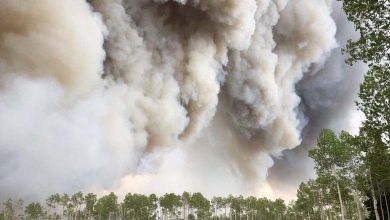Stunning new imagery of the lagoon nebula from the Hubble telescope

The Hubble telescope transmitted, in the night from Friday to Saturday, various shots of a nebula well known to astronomy enthusiasts: the Lagoon nebula.
This one is famous since the publication, by NASA, of the first incredible images of it. Today, the Lagoon Nebula still impresses.

Measuring 55 light-years across (a width that could be covered in 55 years if traveling at 300,000 kilometers per second, the speed of light) and 20 high, the nebula located at a distance of 5,000 light years from planet Earth. Despite this far distance, its size and the intensity of the stars that compose it make it a relatively easy astronomical element to observe. Indeed, one of his stars main east 32 times larger than the sun and shines with an intensity 200,000 times greater than the latter. This allows the whole nebula to shine in our sky, allowing us to observe it, even with the naked eye.
The breathtaking images transmitted by Hubble, of the nebula, are explained by the presence of many flow of ionized dust and gases (and colored) by ultraviolet radiation given off by certain stars. This is how these incredible cosmic “clouds”. And it is these variations in matter and gas that subsequently favor the appearance of new stars.
How are these images photographed?
If these images are transmitted to us by the hubble telescope – which permanently revolves around the Earth – they result from a compilation of several state-of-the-art technological instruments. It is indeed, the “Advanced Camera for Surveys” and the “Wide Field Planetary Camera 2” which allowed Hubble to immortalize the nebula. In addition, two additional telescopes, located on the surface of the planet and in particular in the Chilean desert, have also made it possible to learn more about certain elements photographed by Hubble.
This is not the first time that NASA’s telescope has impressed at the end of the year. Merger between two galaxies, disappearance of a star or ghost galaxy are all examples highlighting the work done by the telescope teams in recent months.












